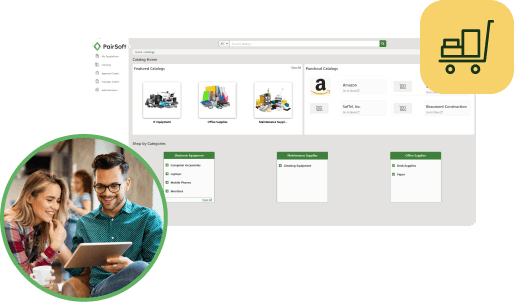Technology plays a crucial role in enabling world-class performance in procurement. Research by
The Hackett Group found that technology enables a shift in an organization’s operating model by helping automate lower-value activities, improve data quality, accelerate execution times, and enhance spend visibility. Here we identify three benchmarks of any world-class procurement process and discuss how technology can help your organization reach those benchmarks.
1: Data-driven insights
A true benchmark in a world-class procurement process is an enterprise’s ability to build and leverage a data foundation that informs and steers decision-making, strategies, and workflows. What are some effective ways to gain data-driven insights into the procurement process?
- Automation over computerization: While most companies have computerized some or even most of their procurement tasks, computerization is not synonymous with automation. A “computerized” procurement system could still involve multiple spreadsheets and other disconnected applications. In a recent Levvel Research study, respondents using non-traditional procurement tools reported lower satisfaction with their software than those who said they used a cloud-based, third-party, modern procurement tool and considered themselves “less automated.” More than 75% of organizations in that same study list automating more steps of the procurement process as a critical or moderate initiative for the coming year.
- Enhance spend visibility: A hallmark of a world-class procurement process is deep visibility into spend. Reliable, quick access to current, accurate data is critical. One way to deliver that data is through key performance indicators (KPIs) that measure your overall organizational objectives in highly visible, easy-to-consume ways. Also consider making use of dashboards, alerts, automated workflow routings, and business activity monitoring tools to provide cross-departmental teams with the visibility they need to be productive.
2: Speed the procure-to-pay cycle
Another benchmark of a world-class procurement process is the speed of its procure-to-pay (P2P) cycle. In procurement, speed means savings. Research from the American Productivity & Quality Center (APQC) found that organizations that have automated their procurement process have a faster purchase order cycle time to place a purchase order (24 hours versus 35 hours) compared to those that use a manual system or spreadsheets. Recent McKinsey research confirms this, finding that companies deploying automated procure-to-pay technology achieve 15-25% savings in most transactions and reduced processing times from days to minutes. What are some effective ways to speed up the P2P cycle?
- Guided Buying Catalogs: Consider incorporating guided buying practices as an effective way to direct shoppers to your approved list of vendors and products. Guided Buying Catalogs make it fast and easy for users across the organization to shop for goods and create requisitions.
- Mobile requisitions and approvals: Empowering mobile users with requisition creation and approval capabilities can speed cycle times by reducing bottlenecks and ensuring that remote and traveling employees have the necessary access to procurement tasks.
3: Address indirect spend directly
Indirect spend has been growing at 7% annually for nearly a decade. As a reminder, indirect spend refers to categories of purchases made that are not specifically related to the core function of the business. IT spending, marketing expenses, and office supplies are typical examples of indirect spend categories. Traditionally, companies have paid more attention to direct spend, thanks to its role in producing products or services that generate profits. However, world-class procurement processes give indirect focus the attention it deserves. What are some effective ways to better control indirect spend?
- Centralize purchasing: Many companies rely on a centralized direct procurement team and a decentralized indirect procurement strategy. There are opportunities for savings on indirect spend by centralizing this buying function as well. Centralized spending increases your company’s purchasing power and helps achieve economies of scale. It also makes it easier to provide careful scrutiny of suppliers and their contracts.
- Form strong supplier relationships: In indirect procurement, the focus is typically on spend management, with competitive costs being the key focus. However, investing in strategic, rather than transactional supplier relationships can help reduce indirect spend. In a global research study by Vantage Partners, 50% of the companies participating reported that they “consistently get the best people, best pricing, and best ideas from their key suppliers, thereby gaining a competitive advantage.”
World-class procurement software
Like any successful business initiative, developing a world-class procurement process involves a combination of people, processes, and technology. The technology that’s up for the job is innovative procurement automation software. This technology tool goes far beyond computerization to provide data-driven insights and analytics, speeds the procurement cycle, and brings both direct and indirect spend under control. We’ve introduced just three benchmarks of a world-class procurement process here, and with the right automation tool, your organization can discover many more.
What's stopping your procurement process?
Talk to an expert today to uncover how your team’s procurement stacks up against the top performers in your sector.






